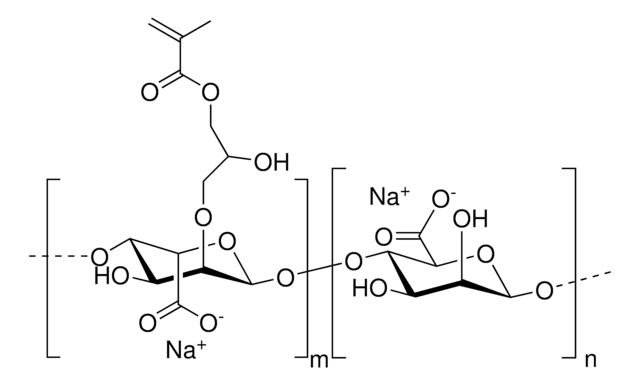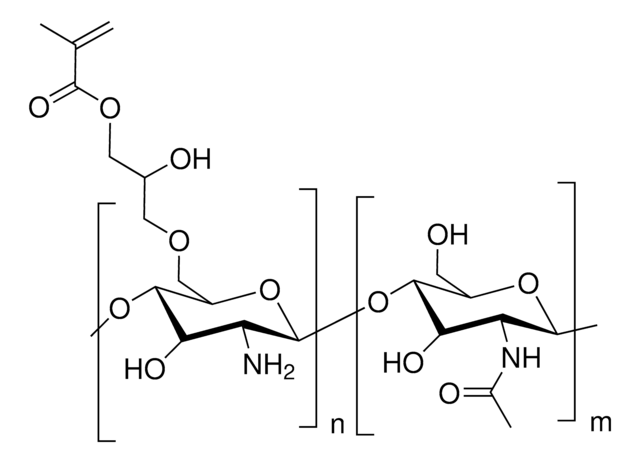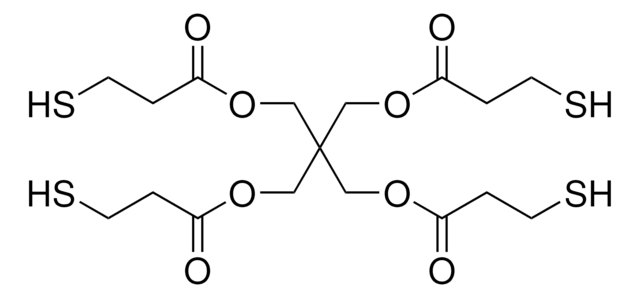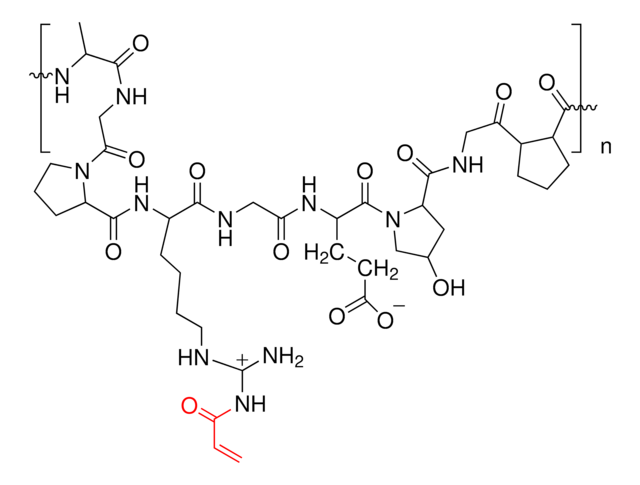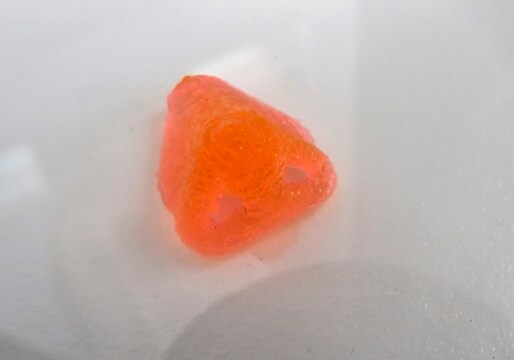924482
Methacrylated Alginate
Medium Viscosity, Low endotoxin
Synonym(s):
3D Bioprinting, AlMA, AlgMA, Alginate, Methacrylate, Sodium Alginate
About This Item
Recommended Products
description
Degree of Substitution: 15-25%
Quality Level
form
(Powder or chunk(s) or fibers)
impurities
<10 CFU/g Bioburden (Aerobic)
<10 CFU/g Bioburden (Fungal)
<100 EU/g Endotoxin
color
white to off-white
suitability
conforms to structure for NMR
Application
Alginate is an anionic polysaccharide that is widely used in pharmaceutical and biomedical applications due to its non-animal origin, low toxicity, biocompatibility, and biodegradability. Alginate hydrogels are commonly used to fabricate tissue engineering scaffolds, bioinks for 3D bioprinting, and nanocarriers for drug & gene delivery. Due to the thermal or photochemical crosslinking of the terminal methacrylates, methacrylate-functionalized alginate can be used to prepare hydrogels resistant to matrix degradation. Properties of the resulting hydrogel (e.g., stiffness, swelling ratio, rate of degradation) can be tuned by alginate molecular weight, degree of methacrylate functionalization, and crosslink density.
Storage Class Code
11 - Combustible Solids
WGK
WGK 3
Flash Point(F)
Not applicable
Flash Point(C)
Not applicable
Choose from one of the most recent versions:
Certificates of Analysis (COA)
Sorry, we don't have COAs for this product available online at this time.
If you need assistance, please contact Customer Support.
Already Own This Product?
Find documentation for the products that you have recently purchased in the Document Library.
Our team of scientists has experience in all areas of research including Life Science, Material Science, Chemical Synthesis, Chromatography, Analytical and many others.
Contact Technical Service